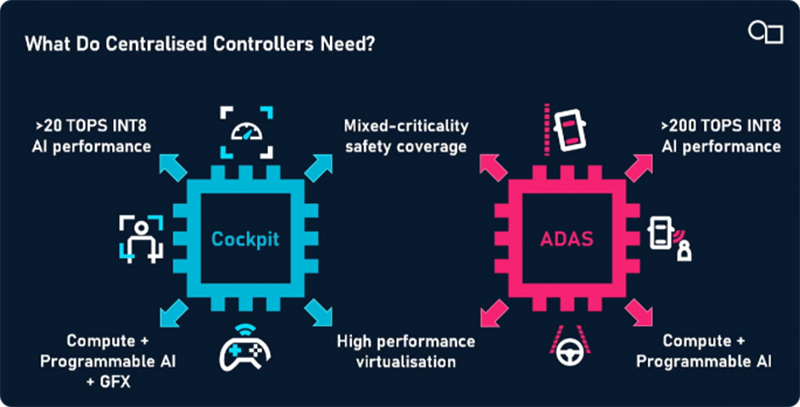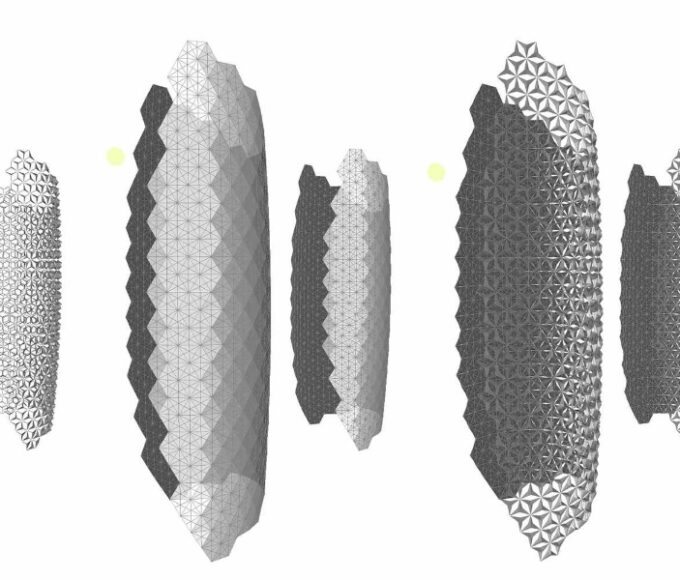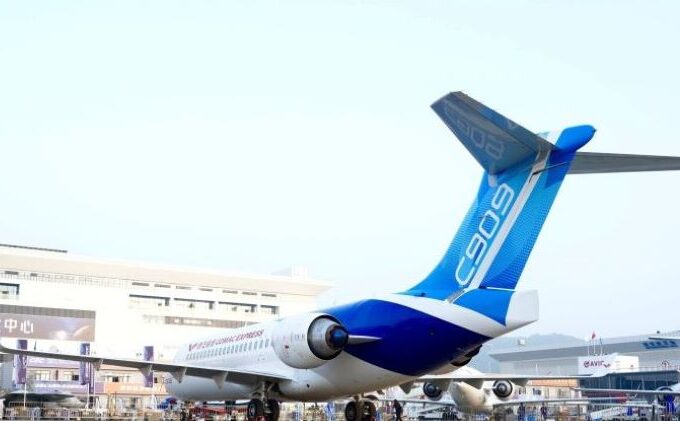As vehicles become increasingly intelligent, electronic architectures are evolving towards centralization. Functions like smart cockpits and ADAS demand higher GPU computing power and AI inference capabilities, while the systems must also meet multiple challenges such as functional safety, long lifecycles, and software-defined capabilities. At the 5th Automotive Chip Industry Conference hosted by Gasgoo on September 12, 2025, the latest news from Imagination Technologies revealed, Ike, Technology Director at Imagination Technologies, starting from the evolution trends of automotive electronic architectures, provided an in-depth analysis of the new requirements for computing power, safety, and flexibility in current smart cockpit and ADAS systems. He also shared Imagination Technologies’ innovative solutions and practical implementations in areas like GPU and AI converged computing, functional safety, and hardware virtualization.
Focusing on the demands of smart cockpits and ADAS for high computing power, high safety, and long-lifecycle technology, Ike highlighted the deeply converged GPU and AI computing architecture introduced by Imagination Technologies. This solution tightly integrates graphics rendering and AI computing at the hardware level, enabling efficient internal data interaction, significantly reducing access to and dependence on external memory bandwidth, and markedly improving energy efficiency and compute density. Furthermore, a distributed safety check mechanism was proposed, achieving functional safety with only about a 10% area increase compared to the previous generation, avoiding the resource waste associated with traditional dual-core lockstep approaches. The architecture also supports hardware virtualization, allowing for dynamic allocation of computing power to different domains like instrumentation, infotainment, and ADAS, enabling multi-system isolation and flexible resource scheduling.
Currently, this architecture has been applied in platforms such as Renesas’ R-Car, supporting compute configurations ranging from 0.25 TOPS to 200 TOPS, and efficiently supports emerging data formats like BF16 and FP8. Looking ahead, Ike stated that Imagination Technologies will continue to deepen the converged design of GPU and AI, promote the development of software-defined cockpits, and through cooperation with OEMs, enable technological iteration to support more efficient and safer intelligent vehicle computing platforms.
Below is a summary of the speech content:
Automotive Smart Evolution: Computing Power & Safety New Challenges

Ike identified three major trends in current automotive electronics development. First, smart cockpit functions are increasingly rich, with digital instrument clusters, multi-screen interaction, and infotainment systems all requiring powerful graphics rendering and AI processing capabilities. Second, electronic architectures continue to centralize, with tasks originally belonging to multiple domain controllers (such as millimeter-wave radar, lidar, and camera data processing) gradually being integrated into central computing units, placing higher demands on multi-task parallel processing. Third, software-defined vehicles have become mainstream, with OEMs continuously updating vehicle functions via OTA, thus hardware must possess sufficient flexibility to adapt to long-term software iteration.
Additionally, automotive product lifecycles can be as long as 12 years, during which AI algorithms and computing power requirements continue to evolve rapidly. “From CNNs to Transformers and Diffusion models, algorithm efficiency keeps improving. How to design a hardware solution that can adapt to technological changes over such a long lifecycle is a direction we continuously ponder,” Ike emphasized.
GPU+AI Converged Arch: Unify High Performance & Low Power
To address these challenges, Imagination Technologies proposed a “GPU+AI” converged computing architecture. This architecture closely integrates graphics rendering and AI inference at the hardware level, achieving efficient collaboration through Unified Compute Clusters. Ike detailed the technical advantages of this architecture: In traditional solutions, GPU and AI modules are often relatively independent, requiring data interaction through external DDR memory, leading to high latency and bandwidth usage. Imagination Technologies’ innovative design allows GPU and AI computing units to exchange data directly internally, significantly improving throughput efficiency and reducing latency and system power consumption.
This architecture can provide up to 200 TOPS (INT8) of AI computing power, with compute density per unit area increased by 3.6 times compared to the previous generation. It also supports various data formats like BF16, FP8, and FP4, adapting to scenarios with different precision and efficiency requirements. At the software level, Imagination Technologies provides a complete toolchain, including underlying compute libraries, standard programming interfaces (such as OpenCL), and compiler frameworks (like TVM), helping developers efficiently deploy AI models and achieve software-hardware co-optimization.
Functional Safety & Virtualization: Auto’s Top Safety-Integration Met

Beyond computing power, functional safety is also core to automotive chip design. Ike highlighted Imagination Technologies’ breakthrough in functional safety – a distributed safety architecture. Compared to traditional dual-core lockstep solutions, this architecture does not lead to a doubling of area or performance overhead due to redundancy. By implementing graded safety strategies for different modules within the GPU, it achieves precise protection at different levels (ECC checks, parity checks, dual-core lockstep, etc.), ultimately meeting ASIL-B/D level functional safety requirements with only a 10% area overhead. “This not only significantly reduces costs but also ensures high system performance output,” Ike added.
On the other hand, as domain fusion becomes a trend, a single chip needs to simultaneously support multiple systems like instrumentation, infotainment, and ADAS. Imagination Technologies utilizes hardware virtualization technology to achieve flexible allocation and isolation of computing power. For example, a chip with 1 TOPS of computing power can be dynamically partitioned into 0.25T for instrument cluster rendering and 0.75T for the infotainment system. The domains do not interfere with each other, and even if one system fails, it will not affect critical driving functions. “Hardware virtualization not only improves resource utilization but also reduces the complexity and cost of system deployment, truly supporting the realization of software-defined vehicles,” Ike stated.
Case Study: Partnering with Renesas to Advance In-Vehicle Chip Innovation
Using the cooperation between Imagination Technologies and Renesas as an example, Ike introduced the practical application of its IP in automotive chips. Renesas’ R-Car series chips utilize Imagination Technologies’ GPU IP with functional safety and high performance, with the highest configuration reaching up to 1 TFLOPS of floating-point compute power, while also offering flexible configurations like a 0.25T version to suit different vehicle model requirements. This solution supports multi-core scaling and power optimization, meeting the demands of high-performance graphics and AI processing while also balancing energy efficiency control and modular design. It is currently applied in smart cockpit and ADAS systems.
Open Ecosystem: Driving Automotive Computing Architecture Evolution
In conclusion, Ike emphasized that Imagination Technologies will continue to invest in the R&D of GPU and AI converged architectures and work with industry partners to drive automotive computing platforms towards higher efficiency, safety, and openness. “We not only provide IP but are also committed to building a scalable, software-defined solution ecosystem to help automakers and Tier 1 suppliers meet the challenges of automotive electronics in the next decade.” Imagination Technologies has launched multiple generations of GPU products supporting automotive functional safety. Its new-generation architecture not only significantly enhances computing power and energy efficiency but has also been mass-produced and implemented in products from several global mainstream chip companies.












